► Niro Hybrid and Plug-in Hybrid driven
► Striking looks inside and out
► A sensible yet interesting family hybrid?
After six years on sale, Kia’s replacing its Niro range with a brand-new model. It follows the same formula as before, being a compact SUV that’s available as a self-charging hybrid, plug-in hybrid or a fully electric model, but now one that wants to lure you in with desirability instead of just cold-hearted pragmatism.
It’s based on a new platform, gets interior styling and tech inspired by the brilliant EV6 and promises to address some of the weaknesses of the old car. Let’s find out if it does just that.
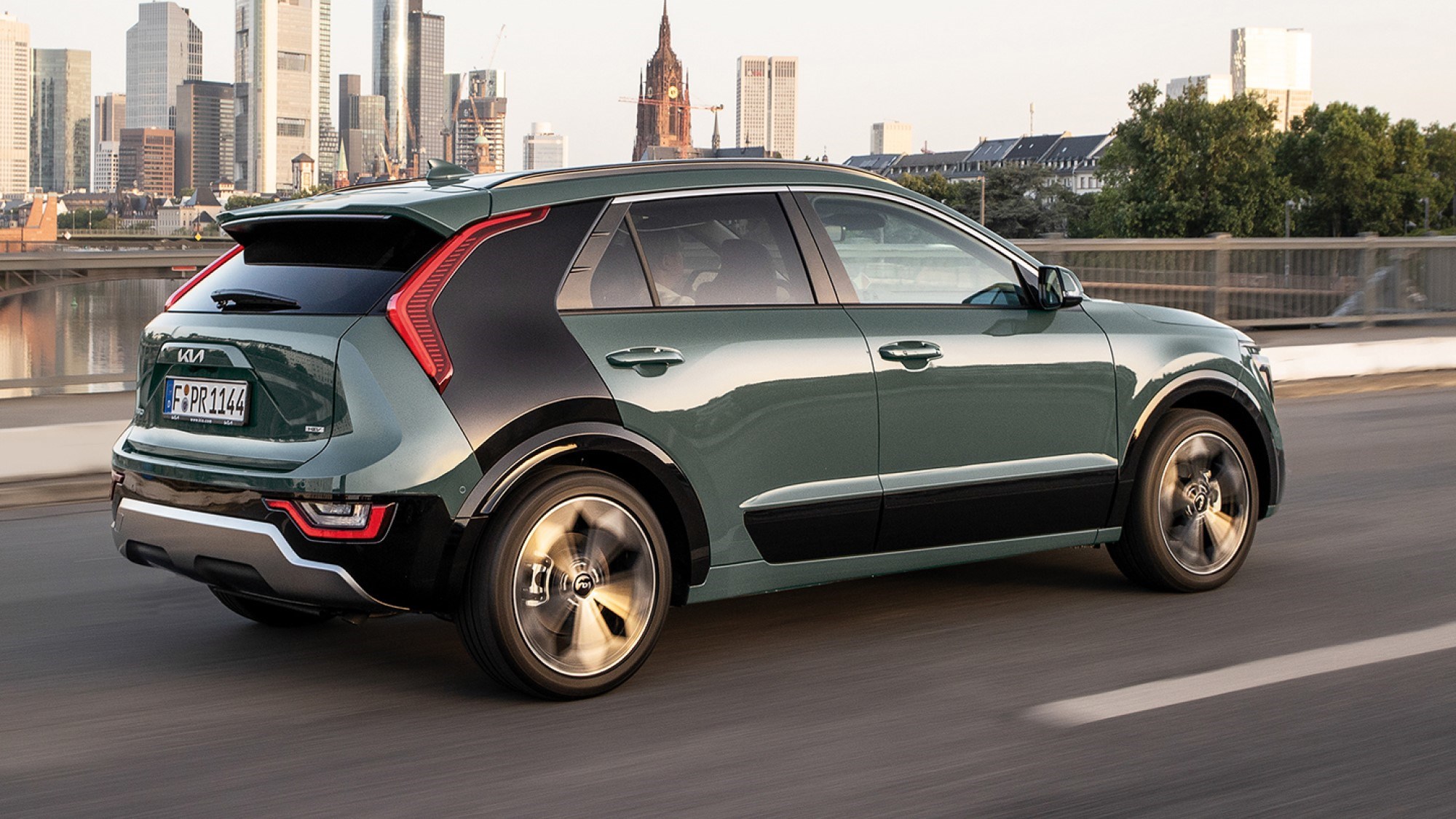
We’ve a separate review of the Kia Niro EV (no longer called the e-Niro) here, and this review will cover both hybrid (HEV) and plug-in hybrid (PHEV) models.
Make sure you get my best angle
The Niro’s gone all designer on us. While the first-gen model looked like a jelly mould of a SUV that hadn’t been given quite long enough in the fridge, the latest car’s been beaten with the styling stick.
The boldest addition is the C-pillar, which stands proud of the rest of the body. There’s actually some aero trickery going on here – a channel terminating by the rear lights which minimises turbulence and drag. Props to Kia for not hiding it away, we suppose – on most press models you’ll even find it painted in a contrasting colour to really draw attention to it, though solid shades are available across the range too.
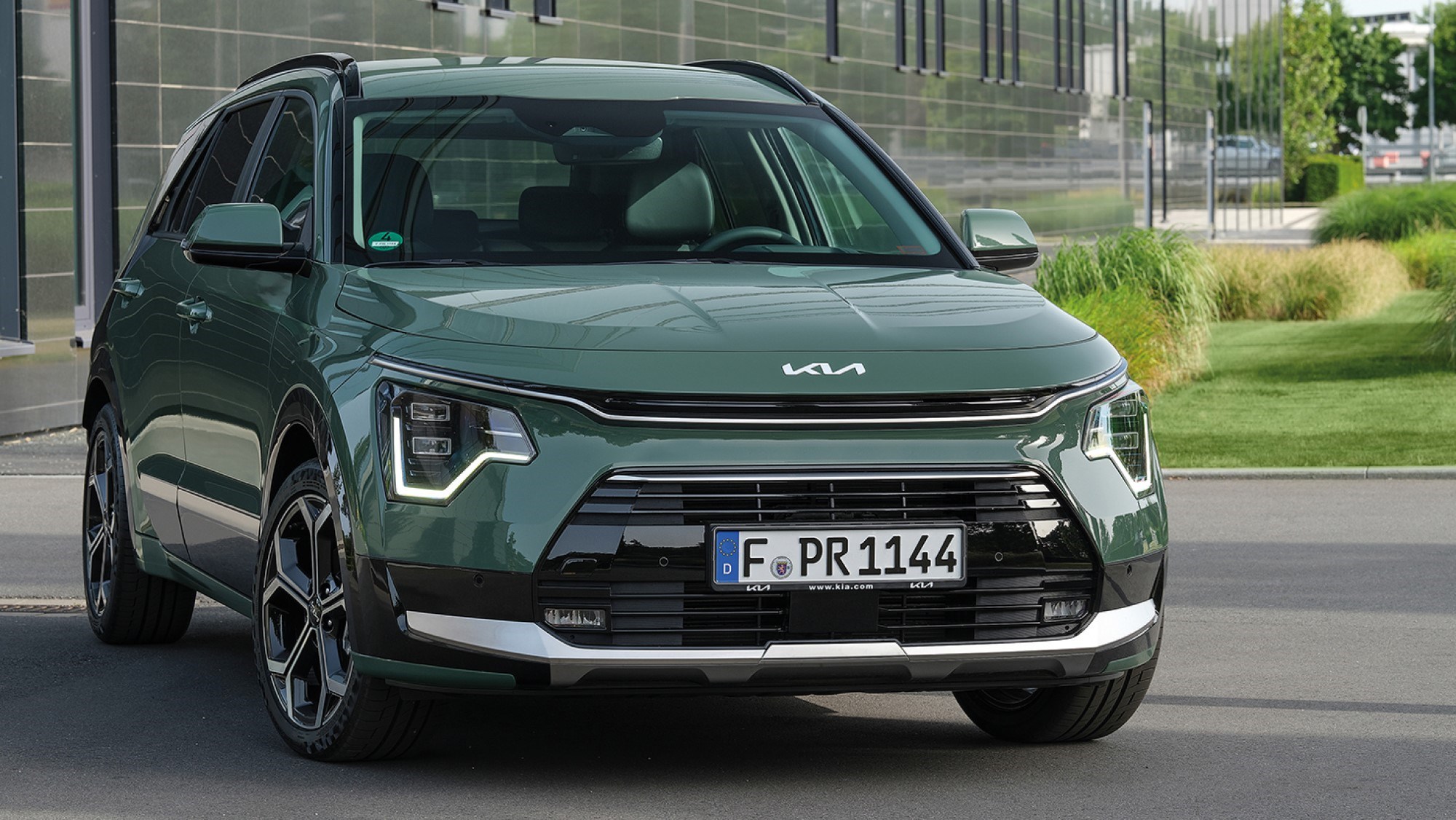
Up front there’s the latest evolution of Kia’s ‘Tiger Nose’ grille – now rather ugly, if we do say so – atop low-set, angular headlights. The rear’s more anonymous but we do like those high-set taillights both in terms of styling and visibility. It’s a shame, then, that the indicators are set into the bumper instead.
So is it a new car under that swanky body?
It rides on the latest Kia K3 platform, stiffer and lighter than the one that it replaces. The new Niro’s slightly longer and wider than the old car, with a longer wheelbase which gives it more interior space.
As for engines, we’ll deal with the electric powertrain of the Niro EV in its own review. The two hybrid offerings both start with a 1.6-litre naturally-aspirated four-pot petrol and six-speed DCT.
For the hybrid, it’s paired to a 32kW electric motor and 1.32kWh battery pack giving a total system output of 139bhp. For the PHEV, it’s a 62kW motor, 11.1kWh battery and 180bhp output.
Electric range is somewhat negligible for the HEV but the PHEV can go up to 40 miles WLTP on electricity alone.
The best hybrid cars
What are they like to drive?
Surprisingly different to each other, though not a lot different to the old car. We’ll start with the HEV, which is by far the weaker of the two offerings. With that modest output, it needs working quite hard to make progress – and when you do, the thrashy engine note and rather clunky gearbox make themselves well known. It doesn’t quite moo like a CVT but in some ways it’s actually worse, most CVT-equipped hybrids being fairly refined beasts these days.
The PHEV’s extra grunt is welcome at all times, with the more powerful electric motor improving response. It’s not what you’d call overpowered, but the petrol engine does have more of a chance to relax than in the HEV.
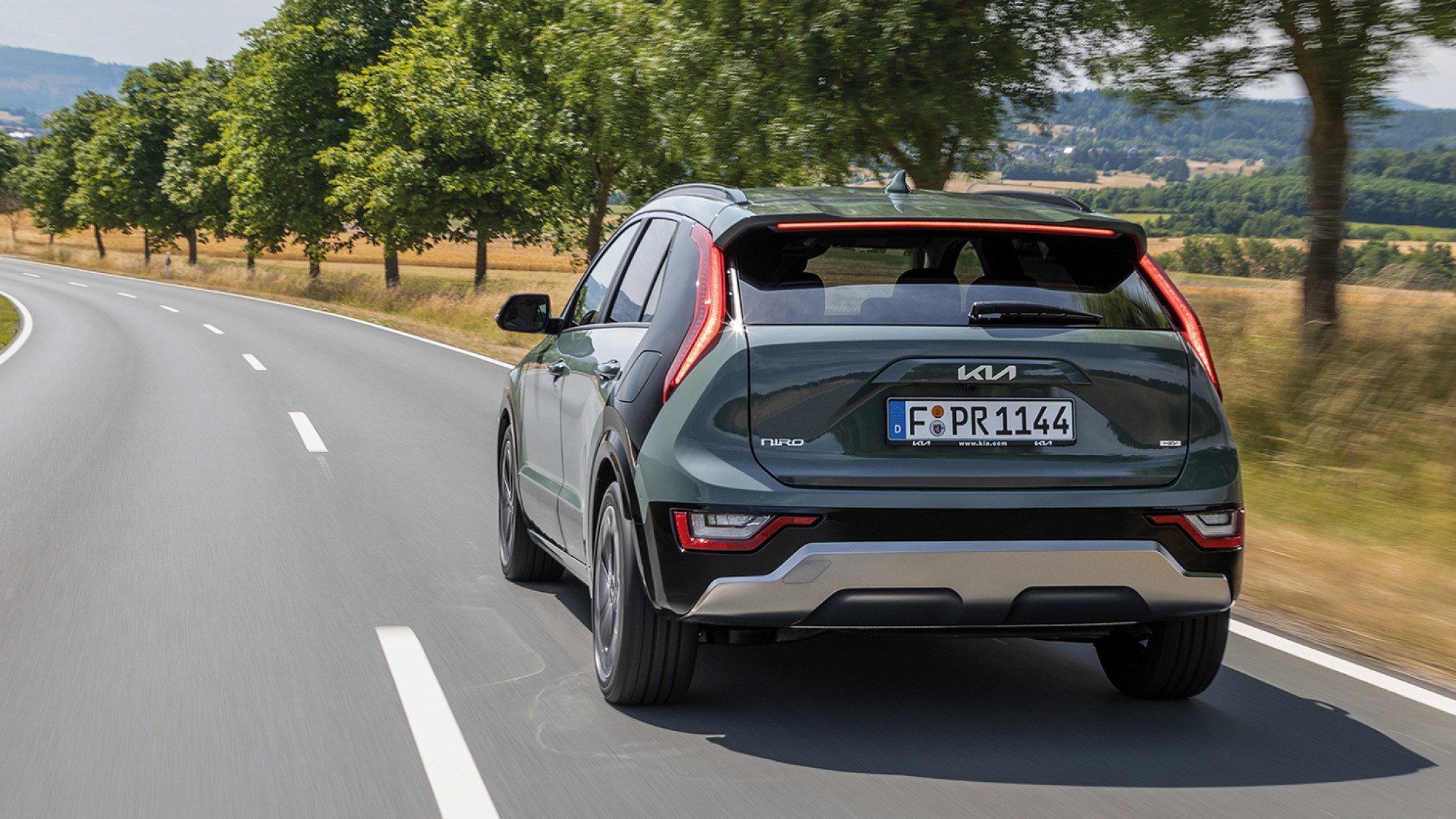
Don’t expect the open road to be a particular pleasure in either car, though. The completely remote-feeling steering inspires absolutely no confidence, there’s lots of body lean and not a great deal of grip. Tiptoe into corners and you’ll feel much safer.
Driving round town is better, with light controls and reasonable visibility. The regenerative braking’s a pain, though. It’s adjustable, with three levels selected through the steering column paddles – but if you want it to take you right down to a halt you need to pull and hold the left-hand paddle, which is unintuitive and awkward. Worse, tapping the accelerator cancels the regen abruptly instead of progressively, so if your chosen setting is slowing you down too quickly you can’t modulate your speed with the throttle and you end up bunny-hopping along like a learner. Infuriating.
Ride quality was a bugbear of the old Niro, and while it’s still firm it is a big improvement over the old car.
What’s that EV6-inspired interior like?
Kia interiors have a lot going for them at the moment and the Niro is no exception. The fundamentals are all excellent – decent adjustment in the seat and steering wheel, clear, easy-to-use infotainment and driver info screens, good storage for odds and ends and all the tech you could reasonably crave.
It also makes all the right eco noises, with a headlining made from recycled materials and BTX plastics (whatever that means) on the dash and door cards.
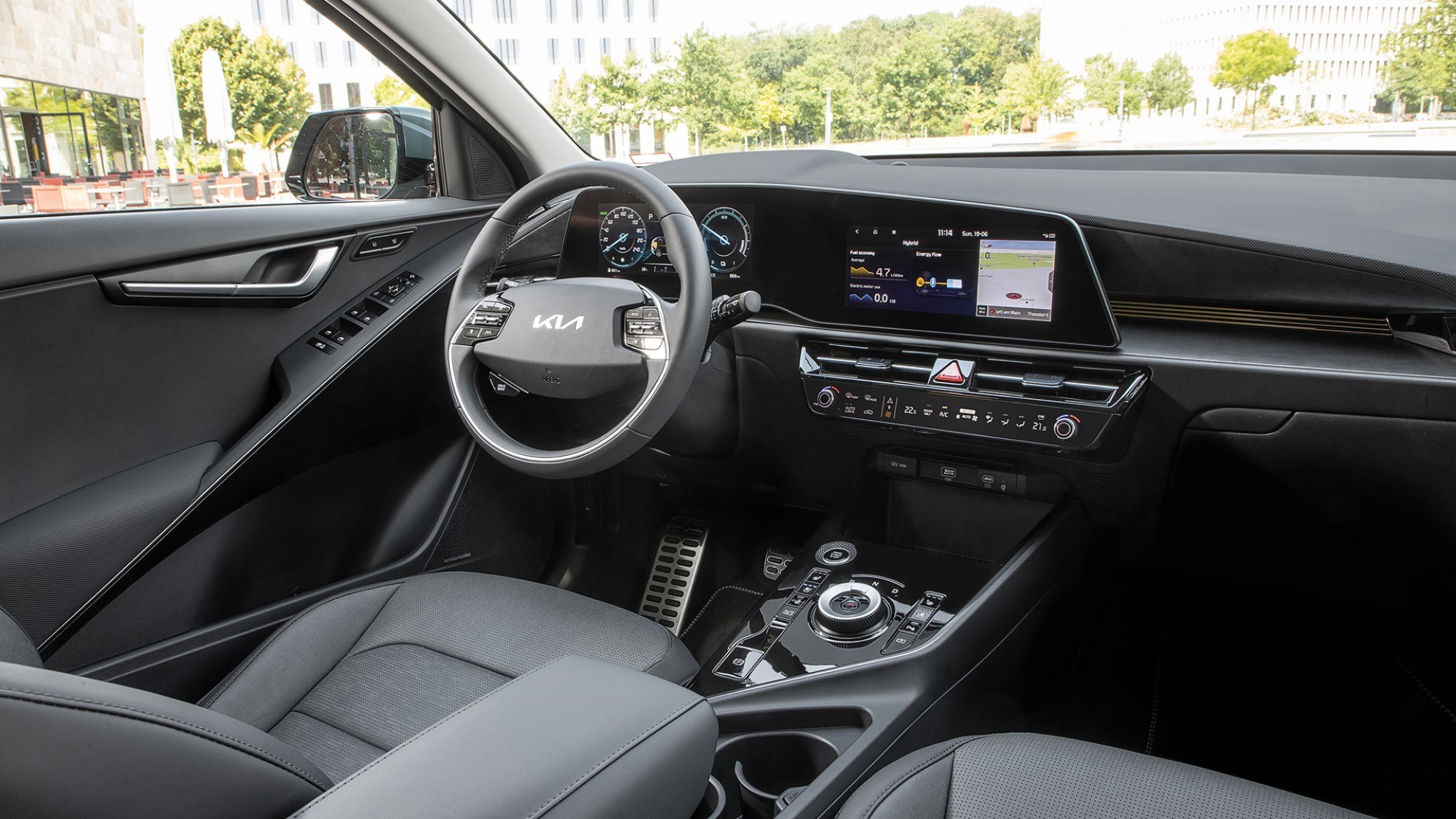
Some items are less successful – we’re still not convinced by the multi-purpose touch-sensitive strip (borrowed from the EV6) that hosts the climate controls or the infotainment hotkeys depending on which mode it’s in, and the drive mode selector clinging to the steering wheel like a wart on a chin is particularly ugly. But it feels good in here, if dark – HEV and PHEV models get very little to break up the black.
Space is good too. The rear seats will happily swallow two six-foot adults in comfort – or two massive child seats – with nice big doors and deep windows to give everyone a good view out. The boot’s wide and flat, but not the largest – especially on PHEV models, which lose more than 100 litres compared to the HEV or EV due to the location of the batteries.
How much?
The HEV range starts from around £27,845, which admittedly is more than a Toyota Yaris Cross albeit the Niro is slightly larger. The PHEV kicks off from £32,775, which seems much better value – it’s cheaper than a Renault Captur PHEV but bigger, better to drive and better-equipped.
Each trim level is £2,750 more than the one before it, and you’ll probably want the mid-spec ‘3’ trim at the minimum as it comes with a large, 10-inch infotainment screen rather than the pokier 8-inch affair of the ‘2’ models. Want that fancy two-tone paint finish? It’s only available on top-spec ‘4’ cars. As yet, there’s no pseudo-sporty GT-Line models, which we’re not too mad about.
We didn’t get much of a chance to gauge fuel economy on our short test drives. Kia claims up to 64mpg for the very leanest, lowest-spec HEV and a totally irrelevant 353mpg for the PHEV. We’d suggest about 50mpg is more realistic for both models, though the PHEV can return impressive numbers if you charge up regularly.
Verdict
This is a really difficult car to love. The PHEV is more relaxed than the HEV but neither have the sort of effortless, easy driving manners that we’d like from a modern hybrid. With the coarse engine working so hard, there are shades of early Toyota Prius about how the Niro drives – and that’s not a favourable comparison.
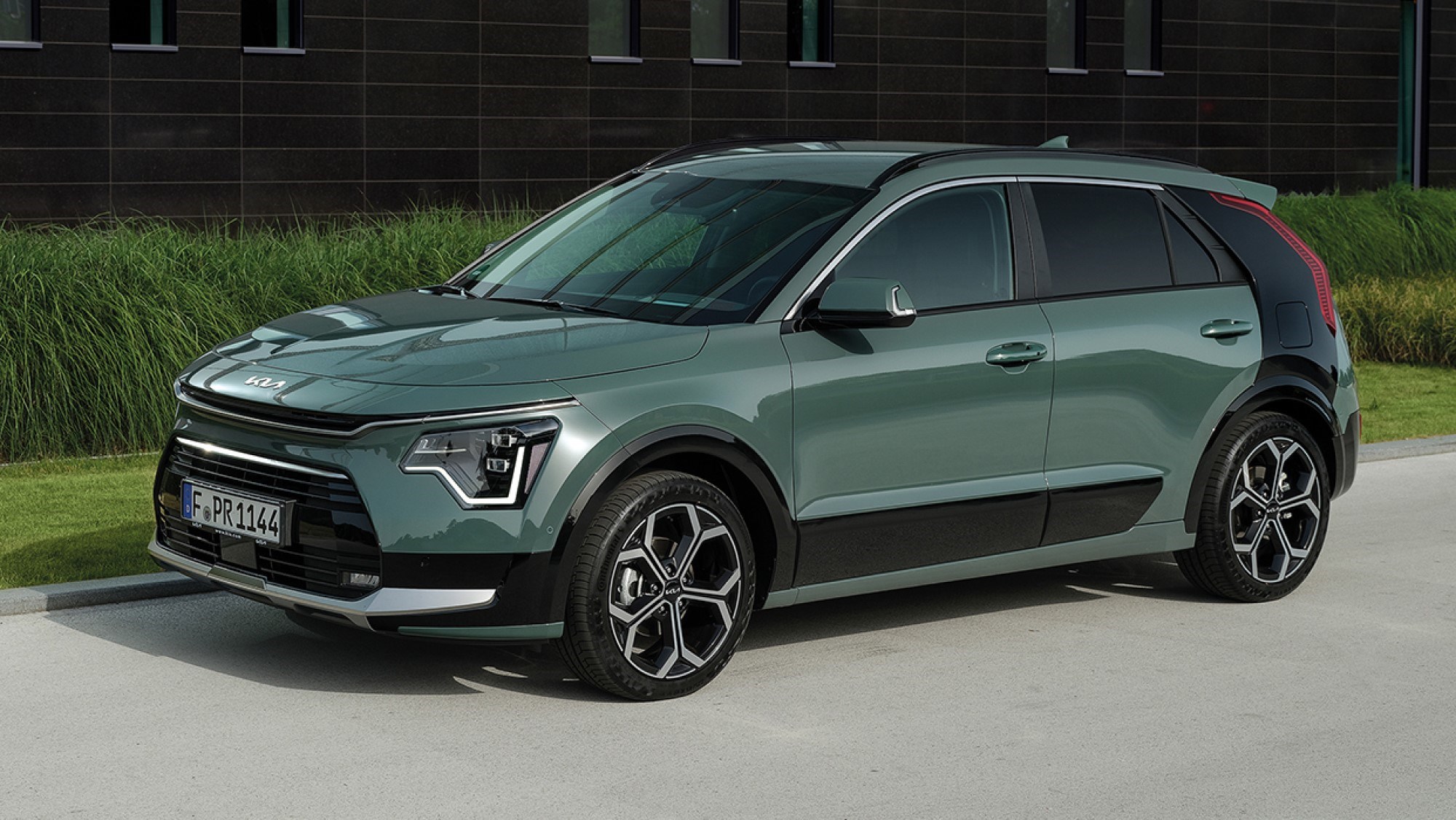
It’s nowhere near as bad as the worst – the dreadful Renault Arkana or woeful Suzuki Vitara Hybrid share that crown, and are orders of magnitude less appealing than the Niro. But nor is it as good as the best, and a Toyota Yaris Cross drives circles around the Kia.
The new Niro looks good, though, and is more than practical enough for a small family. Being a Kia it should be a reliable choice, too – you get that seven-year warranty and a good reputation for dependability. We had just hoped that the visual improvements indicated a corresponding improvement in driving dynamics.
Read more Kia reviews